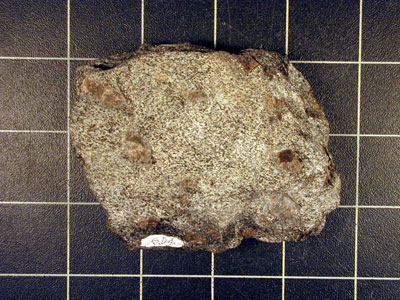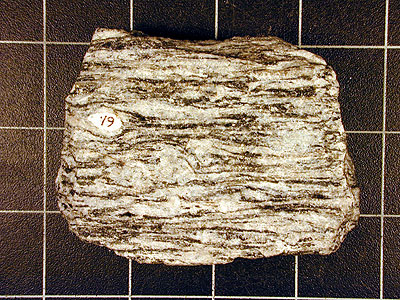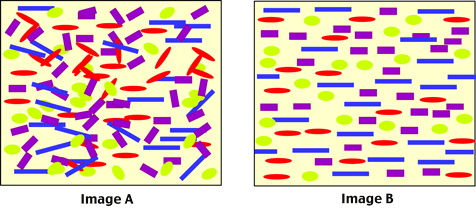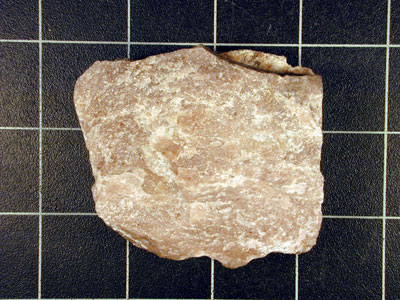Introduction
Metamorphism involves the alteration of existing rocks by either excessive heat and pressure, or through the chemical action of fluids. This alteration can cause chemical changes or structural modification to the minerals making up the rock. Structural modification may involve the simple reorganization of minerals into layers or the aggregation of minerals into specific areas within the rock.
Much of the Earth's continental crust is composed of metamorphic and igneous rocks. Together, these two rock types form the base material at the core of the Earth's major continental masses. Overlying this core are often thick layers of sedimentary rocks. In some regions, this base rock is exposed to the atmosphere and is known as shields. On the Canadian Shield we can find some of the oldest rocks found on the planet (3.96 billion years old). These very old rocks are primarily metamorphic. Metamorphic rocks also are the rock type found at the core of the world's various mountain ranges.
Heat and Metamorphism
Heat is an important agent in the metamorphic modification of rock. Rocks begin to change chemically at temperatures above 200° Celsius. At these temperatures, the crystalline structure of the minerals in the rock are broken down and transformed using different combinations of the available elements and compounds. As a result, new minerals are created. The metamorphic process stops when the temperatures become high enough (600 to 1200° Celsius) to cause complete melting of the rock. If rocks are heated to the point where they become magma, the magma when cooled creates new igneous rocks. Thus, metamorphism only refers to the alteration of rock that takes place before complete melting occurs.
Heat can be applied to rock through two processes: tectonic subduction and the intrusion of magma. Some rocks that are formed at the surface are subsequently transported deep into the crust and the upper mantle at tectonic subduction zones. Temperatures beneath the Earth's surface increase with depth at a rate of about 25° Celsius per kilometer. Scientists estimate that the temperature at the base of the crust is about 800 to 1200° Celsius. This heat is generated from the decay of radioactive materials, mainly in the crust, and heat released from the Earth's core.
Magma can sometimes migrate up through the crust forming an igneous intrusion. This is especially true along continental boundaries, like the western side of North America, where subduction is taking place. Metamorphism takes place in the rock surrounding the magma body because of heat dissipation. Because of the nature of the dissipation process, the level of metamorphic alteration in the influenced rock decreases with distance from the igneous intrusion.
Pressure and Metamorphism
Rocks that buried are subjected to pressure because of the weight of overlying materials. Pressure can also be exerted on rocks due the forces involved in a variety of tectonic processes. The most obvious effect of pressure on rocks is the reorientation of mineral crystals. Under extreme levels of pressure rocks become plastic creating flow structures in their crystalline structure. Pressure almost never acts in isolation as temperatures do get higher with increasing depth below the Earth's surface.
Chemical Action of Fluids
Water and carbon dioxide are often found in small amounts in the perimeter between mineral crystals or in the pore spaces of rocks. When mixed, the resulting fluid enhances metamorphism by dissolving ions and by causing chemical reactions. Usually, the end product of this process is the creation of new minerals by the substitution, removal, or addition of chemical ions. Sometimes fluids can also permeate into rock from adjacent magma.
Types of Metamorphism
Geologists suggest that metamorphism can occur by way of the following three processes.
Thermal metamorphism involves the heating and structural and chemical alteration of rocks through processes associated with plate tectonics. This type of metamorphism has two sub-categories:
Regional metamorphism is the large scale heating and modification of existing rock through the creation of plutons at tectonic zones of subduction. It involves large areas and large volumes of rock.
Contact metamorphism is the small scale heating and alteration of rock by way of a localized igneous intrusion (for example, volcanic dykes or sills).
Dynamic metamorphism causes only the structural alteration of rock through pressure. The minerals in the altered rocks do not change chemically. The extreme pressures associated with mountain building can cause this type of metamorphism.
Metasomatic metamorphism involves the chemical replacement of elements in rock minerals when gases and liquids permeate into bedrock.
Common Metamorphic Rocks
Examples of metamorphic rock types include: Slate is a fine grained metamorphic rock. It is created by minor metamorphism of shale or mudstone. This rock is characterized by the foliation (Figure 10g-6) of its mineral grains which causes it to have cleavage that is parallel.

Figure 10g-1: Slate.
Schist is a medium to coarse grained foliated rock. Foliation is the result of the rearrangement of mica, chlorite, talc, and hematite mineral grains into parallel structures. When compared to slate, schists result from more intense metamorphism.

Figure 10g-2: Schist.
Gneiss is a coarse grained metamorphized igneous rock. In this rock, you get the recrystallization and foliation of quartz, feldspars, micas, and amphiboles into alternating light and dark colored bands.

Figure 10g-3: Gneiss.

Figure 10g-4: Marble.

| Figure 10g-6: The mineral grains in rocks subjected to extreme pressure often rearrange themselves in a parallel fashion, creating a foliated texture (Image A - before metamorphism; Image B - after metamorphism). |
